One of the most simple and economical finishes and protection of the base is shuffling and painting.
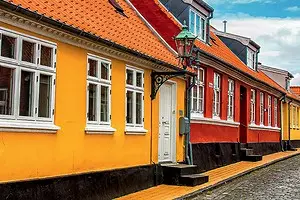
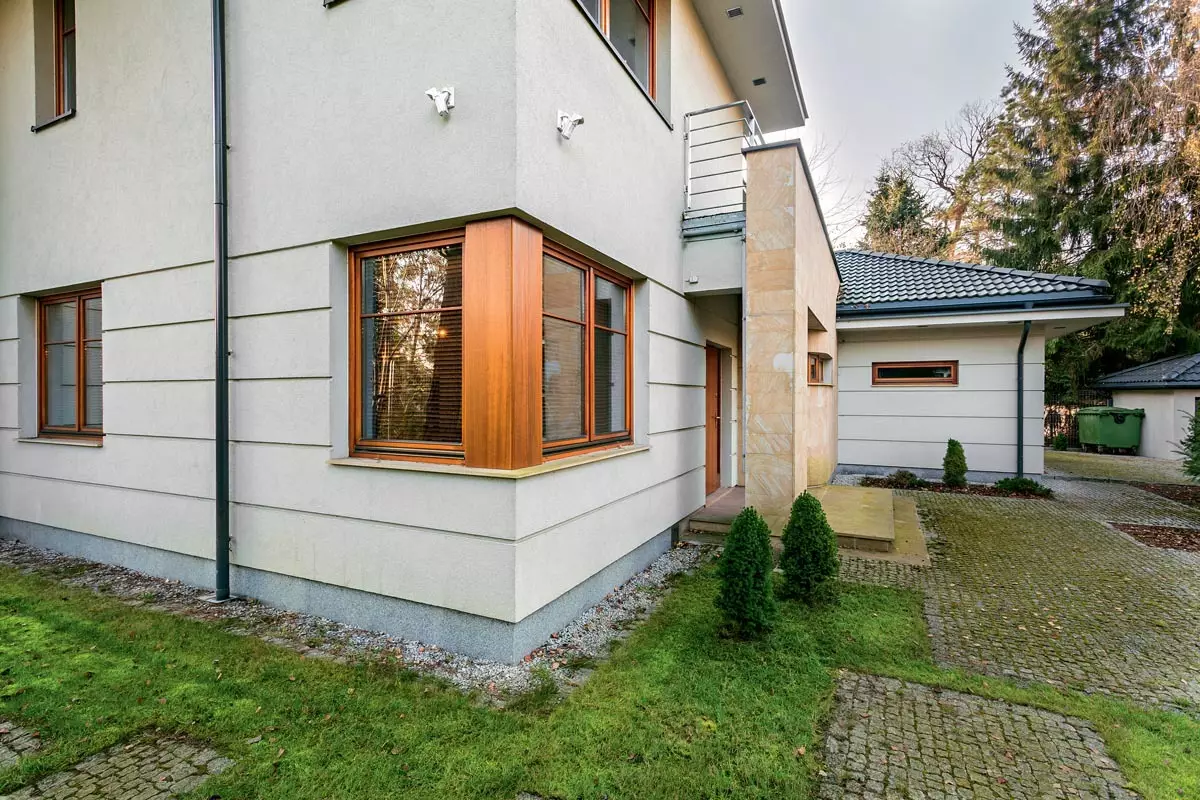
Photo: Legion-Media
The base of the country house should be durable, resistant to unfavorable natural impacts and the appropriate architectural look of the building.
In the architecture, the basement is called the bottom of the wall or part of the foundation of the building, which towers above the surface of the Earth. It serves as the basis for the walls, and also protects them from moisture rising from the soil (capillary supply), and atmospheric precipitation in the form of rainwater, dew, thawa snow. In the middle strip of Russia on the walls of the house without the moisture base, it can rise to a height of up to 3 m! Its negative impact is manifested in the form of heaps, wet zones, which over time leads to loss of strength and emergency situations. Not to mention the fact that due to moisture, the thermal conductivity of the walls increases, and they become less frost-resistant. Therefore, between the basement and the wall necessarily provide a waterproofing layer.
Material for the base is most often served by cast concrete, concrete blocks, brick. The finished design is not only functional, but also has a noticeable effect on the overall perception of a country house. So, on a high base, it seems more representative, spectacular, and at low - less attractive, squat. Optimal experts consider a height of 50-70 cm.
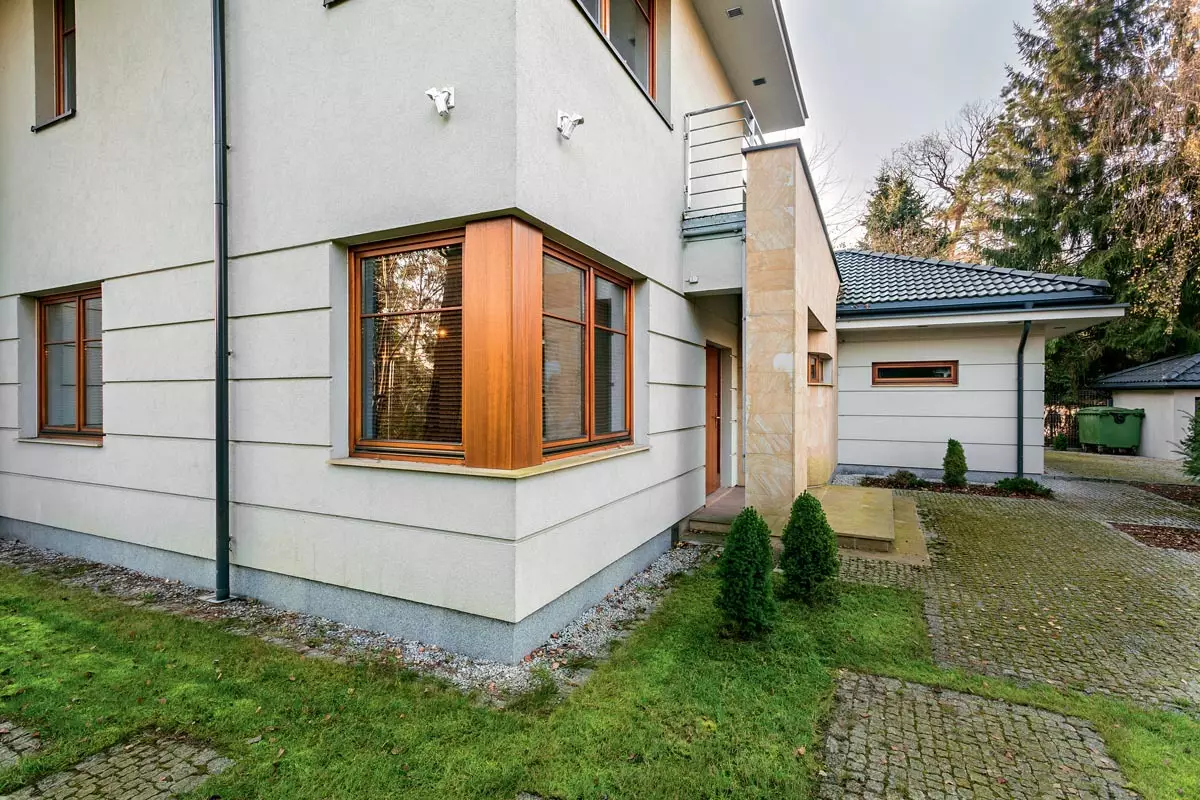
With hot sunny weather, the titled plots of the base are stained to avoid unequal dimensional drying. Photo: Tikkurila.
How to protect the base from external influences?
To protect the base of the house from external influences, use natural and artificial stone, ceramic tiles, plastic panels and, of course, various paints and varnish materials. Modern paints for this part of the structure are distinguished by high resistance to mechanical effects and washing, prevent the penetration of rain and groundwater into the design, but produce pairs from the inside, allowing it to breathe. For example, Sando F Dulux (Akzo Nobel) forms a durable atmospheric coating, resistant to carbon dioxide. The composition is suitable for staining buildings located near motorways, and, importantly, it forms a layer with high dirt-repellent properties. The term of his service on the front surfaces is up to 10 years (according to the conclusion of the GBU Center "Enlak" to determine the durability of the complex coating).
"Paint for facades and basements" ("Tex") protects concrete bases from carbonization (destruction of the reinforcement, associated with the penetration of carbon dioxide and decrease in the acidity of the material), prevents corrosion of reinforced concrete structures, prevents the appearance of mold. And retains these beneficial properties in an aggressive industrial atmosphere. The alkaliy paint YKI (Tikkurila) is designed for coloring concrete basements, galvanized metals and light metal surfaces, as well as for fiber-mineral plates. Agree, if you cover it not only the base, but also drain pipes and plums, the building will look harmonious. However, a non-specialized composition can be selected for staining. In this case, it is important to take into account the type of foundation. For example, a concrete and plastered base exhibits alkaline properties, as well as cement mortar that fastens brickwork. For surfaces of this type, any paint resistant paint with acrylic or silicone binder are suitable.
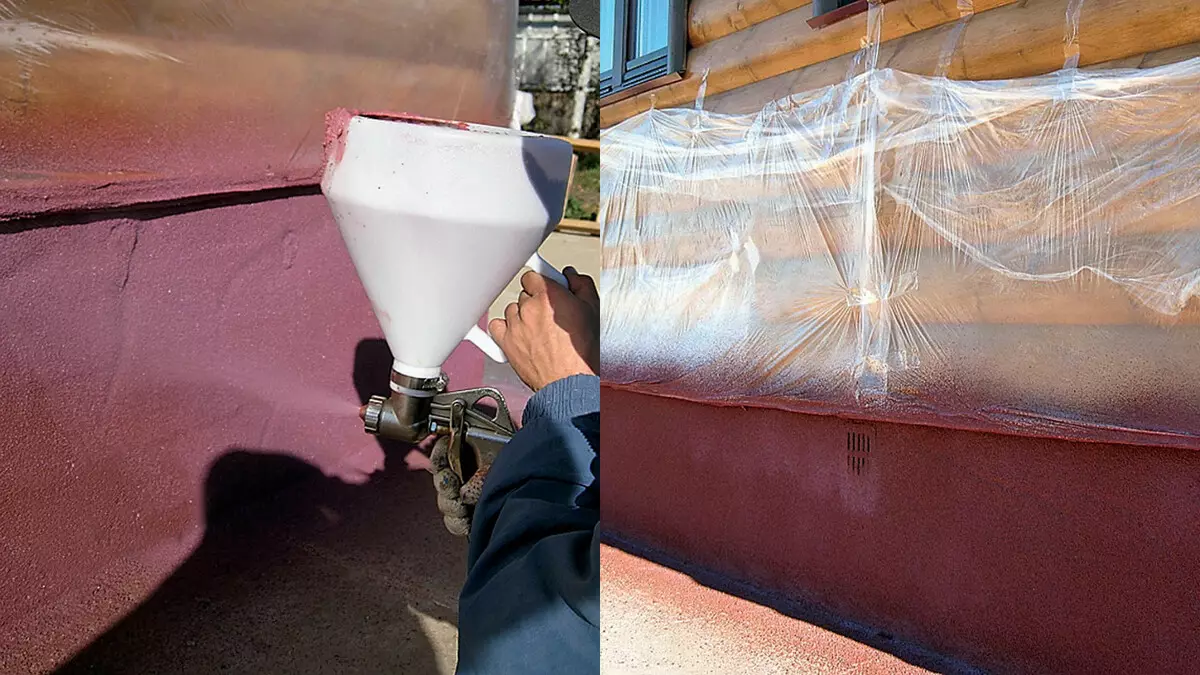
In order to dye the walls in the paint, they are closed with a polyethylene film and samples with scotch. Photo: Cork Center
Preparatory work
Before starting finishing works, the base of the house is purified from dirt, heighters, foreign ones and washed with water. Deep depressions, cracks and other surface defects level plaster. After its drying, they apply the primer recommended by the manufacturer to improve the adhesion of the colorful layer to the base. The conditions suitable for staining are the temperature from 5-8 to 30 ° C and the relative humidity of air less than 80%. Paint is applied in two layers. It is important to remember that "time before applying the next layer" and "the time of complete drying of the coating", indicated on the package, are correct for a temperature of 23 ° C and humidity 50%.
Most of the colors for the base can be applied with brush, roller or sprayer. The last way is the fastest. However, some subtleties should be taken into account. For example, water-based paints for conventional spraying are slightly diluted with water (in a ratio of 1: 10). For airless spraying, water is usually not required. The main thing is to follow the recommendations of the manufacturer in the diameter of the nozzle, as well as to set the appropriate corner of the sprayer and the operating pressure.
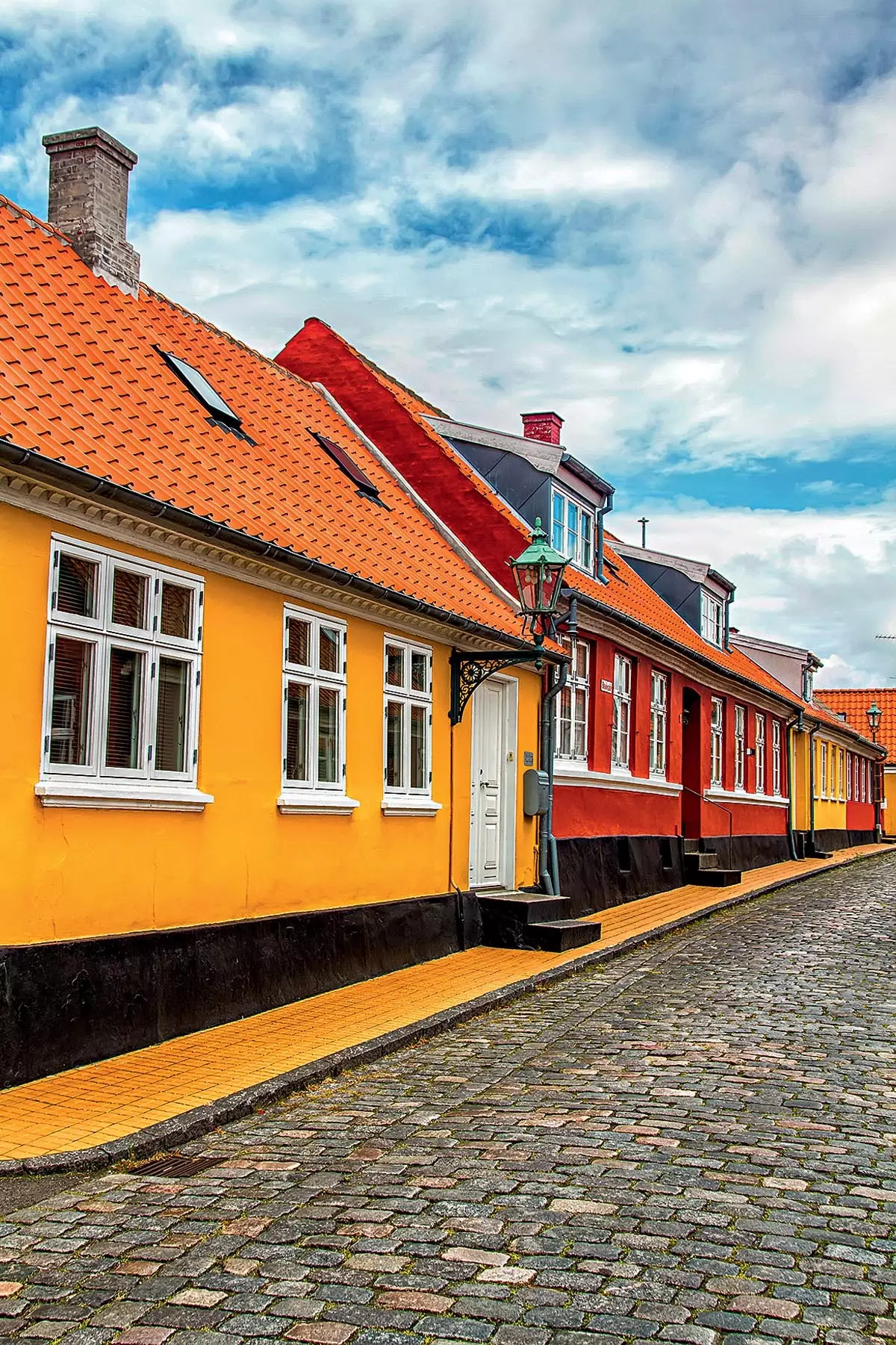
When staining the base part of the building (as well as the facades), brush or roller is undesirable to take breaks, and it is important in places of overwear to follow the "wet wet" principle. Photo: Legion-Media
What color to choose for socle?
There is no strict color selection rules for the base. Some believe that for the bottom of the building is suitable for the dark tones than for walls. Others advise to paint it, focusing on the shade of the roof. The only thing is that the house is completely painted in one color, looks uniform and uninteresting. Therefore, when finishing the base is to be guided by the principle of combining close or, on the contrary, contrasting shades and not be afraid of experiments.What are the paints?
By the type of solvent, paint can be divided into two classes: organic-soluble and water-soluble.
The first as a solvent is usually used White Spirit. Paints form a more dense and almost low-hearted film. Among their advantages - can be stored at negative temperatures, the fresh colorful layer does not suffer from atmospheric influences, such as rain. Among the shortcomings are high toxicity and flammability.
In the second role of the solvent plays water. The compositions practically do not smell and dry quickly. The film formed by them is able to breathe, and therefore it is water-soluble paints more suitable for mineral bases, including concrete basements. But they are transported and stored only at a plus temperature at which water does not freeze.
Value for money: how to choose the right paint?
An inexperienced buyer when choosing paint usually compares the cost of 1 l of several products and buys cheapest. However, it is wiser to calculate how much the surface staining will cost, taking into account the flow rate indicated on the can with paint, as well as to ask the coverage service life. If you summarize both of these indicators, it may be found out that expensive paint with low flow and long service life is much more profitable cheap, with considerable expenses and a short service life.The process of dyeing the base of the country house is erected or suspended by architectural boundaries: the corners of the building, lines under drainage pipes, etc. Keep in mind: at a reduced temperature and (or) high humidity, the drying time of the colorful layer is increasing.
Compare different colors for the base
| Name | Yki. | Sando F Dulux | Saku. | "Paint For facades and Cocoles Profi » | "Paint For roofs and socle " | "Paint For facades and bases »Luxensa Ba |
|---|---|---|---|---|---|---|
| Manufacturer | Tikkurila | Akzo Nobel | Teknos. | "Tex" | GK "Optimist" | Leroy Merlin. |
| The foundation | Acrylate-based latex | Water-dispersive | Water-dispersive | Acrylic water-dispersion | Latex Acrylic | Aqueous dispersion of acrylic copolymers |
| Consumption | 4-10 m² / l | Up to 14 m² / l | 3-6 m² / l | 6-8 m² / l | 5-6.6 m² / kg | 6-10 m² / l |
| Defense period, years | There is no data | To 10 | There is no data | More than 7. | There is no data | To 10 |
| Packaging, L. | 2.7 | 2.5 | 2.7 | 4.5 | 4.5 | 2.7 |
| price, rub. | 1490. | 1440. | 1650. | 865. | 560. | 583. |
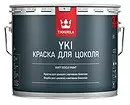
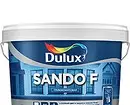
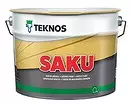
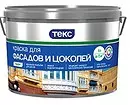
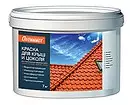
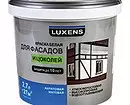
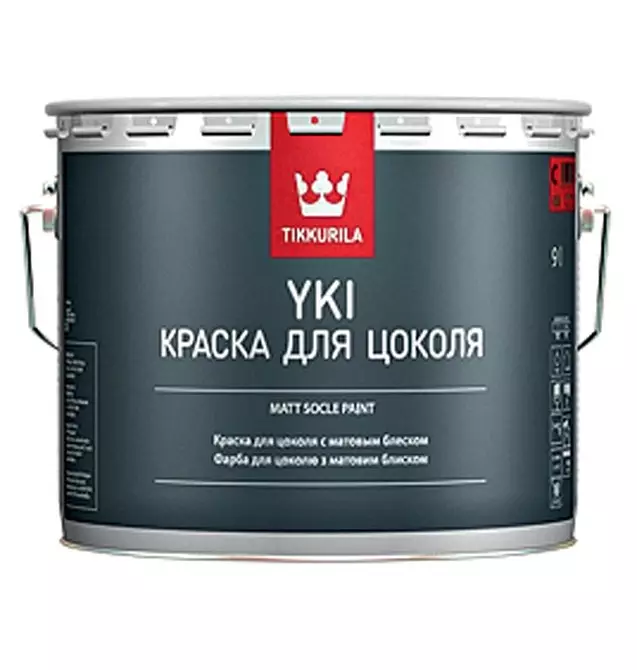
Photo: Tikkurila.
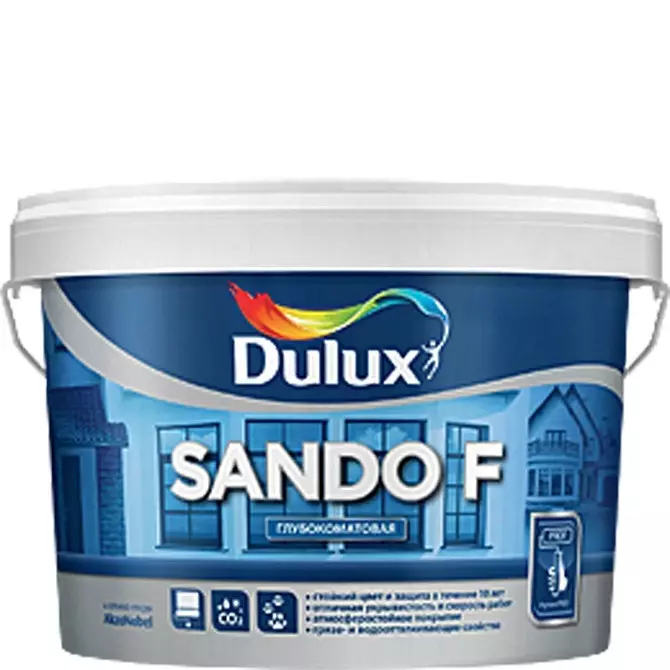
Photo: Akzo Nobel
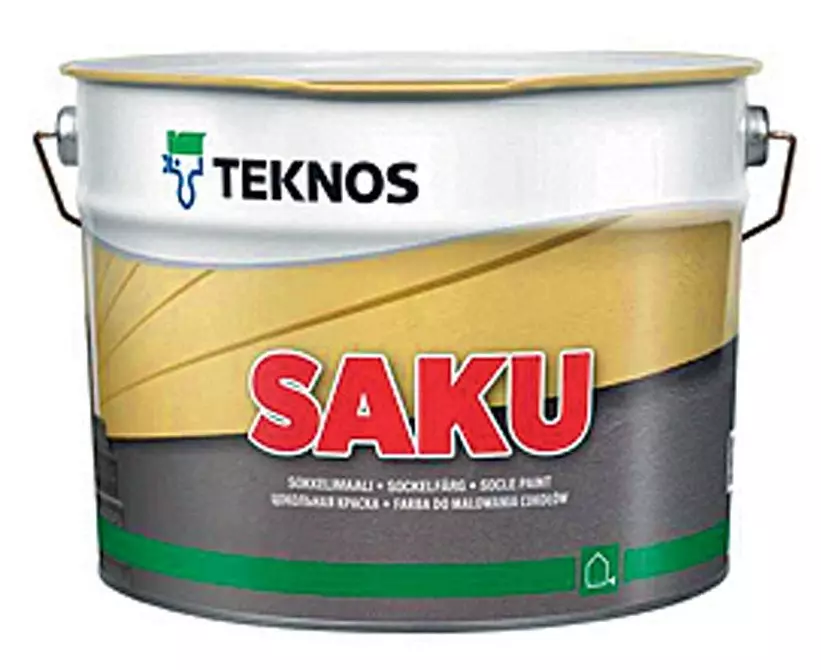
Photo: Teknos.
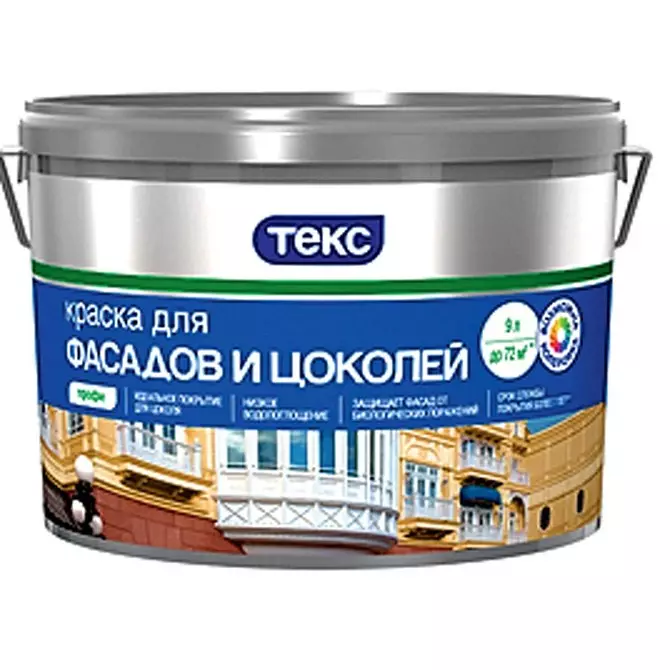
Photo: "Tex"
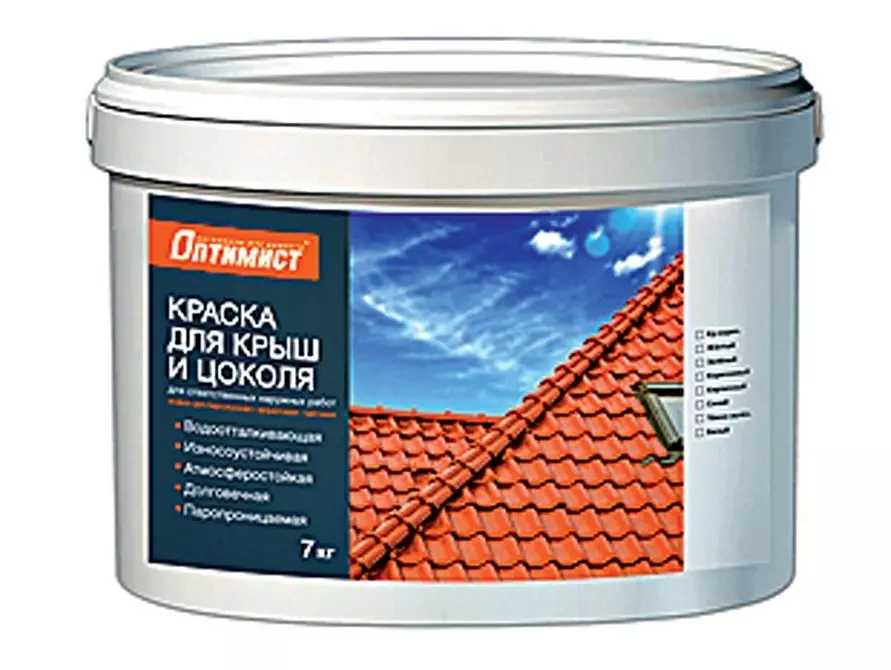
Photo: GK "Optimist"
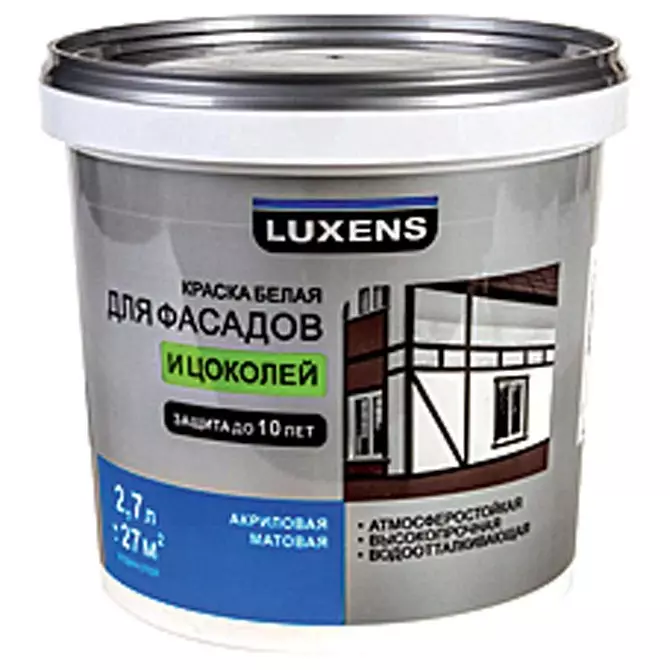
Photo: Leroy Merlin

